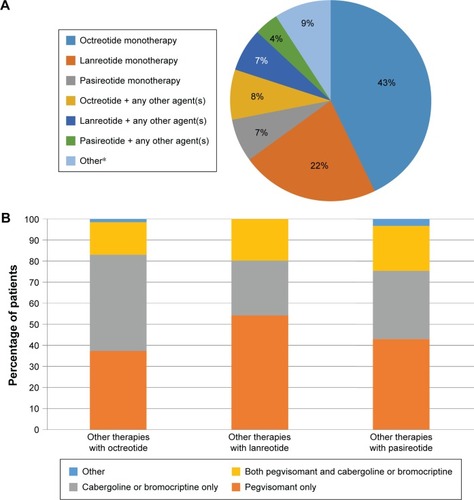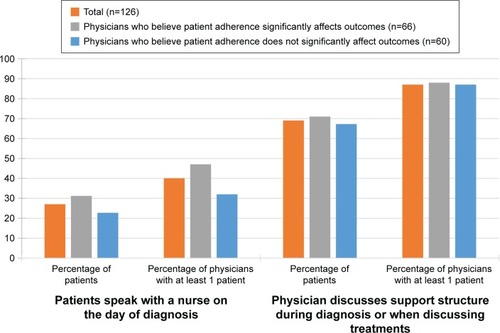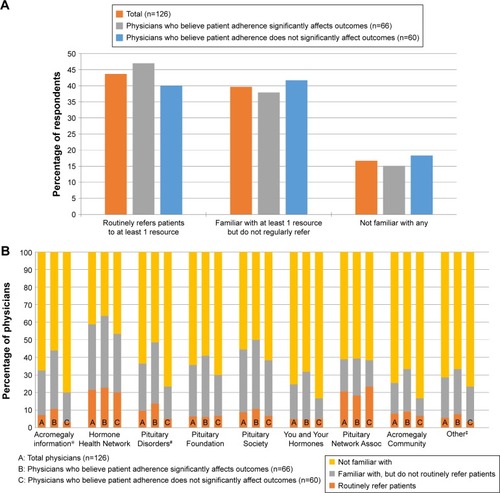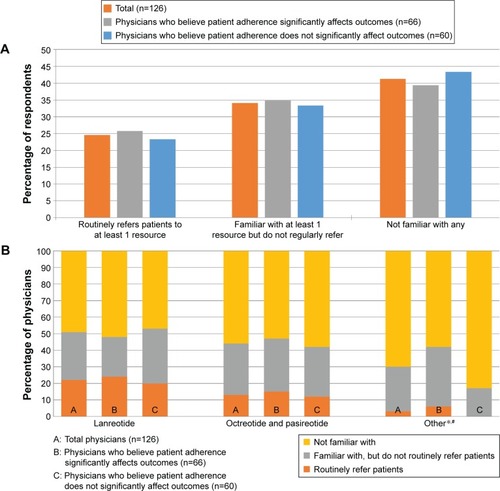Figures & data
Table 1 Respondent demographics, practice information, and prescribing information
Figure 1 (A) Percentage of patients receiving pharmacotherapy for acromegaly; (B) percentage of patients receiving combination therapies.

Figure 2 Frequency of speaking with nurses and discussion of support structure.

Table 2 Discussion of adherence support tools and programs
Figure 3 (A) Overall referrals for patient education resources; (B) awareness of and referrals to patient education resources.

Figure 4 (A) Overall referrals for patient financial resources; (B) awareness of and referrals to patient financial resources.

